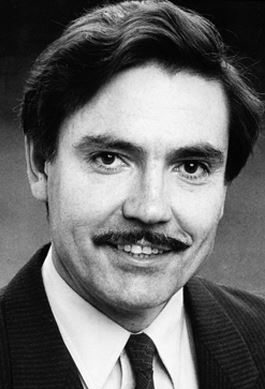
Andreas Gruentzig, a radiologist working in the Kantonsspital of Zurich, intruduced percutaneous transluminal coronary angioplasty to human medicine. He modified a technique innovated by Dotter and Judkins in 1964, who tried to mechanically dilate short stenosis and occlusions of leg arteries with a coaxial double catheter of 8 French (2,6 mm) and 12 French (3,6 mm).
In 1973 Porstman presented a catheter with a latex balloon at the tip but caged by a corset, which was the longitudinally sliced Teflon catheter. In 1976, Gruentzig described in the “Klinische Wochenschrift” a short sausage-shaped polyvinyl chloride balloon located at the tip of a double lumen catheter. After several animal experiments, post-mortem examinations and interoperative dilatations, he decided to use the technique for coronary dilatation in man. The ideal candidate was selected in September 1977.
Both the doctor and his first patient were 38 years of age. The patient had severe effort angina related to a single LAD lesion. He enthusiastically gave his consent and the procedure was performed on September, 16, 1977. In 1984, Andreas Gruentzig recorded his personal account of the first case:
“The dilatation catheter was advanced to the stenosis with no difficulty…To the surprise of all of us, no ST-elevation, ventricular fibrillation or even extrasystole occurred and the patient had no chest pain… Two inflations were performed… After the balloon deflation, the distal coronary pressure normalized as compared to the aortic pressure. Everyone was surprised about the ease of the procedure…”
Coronary angioplasty was born and several major improvements and new devices were to follow: 1982, steerable guidwire (John Sipson); 1984, long technique guidwire (M. Kaltenbach); monorail technique (Bonzel 1986); directional atherectomy (first case by J. Simpson in 1985): stent implantation (first case by J. Puel in March 1986); rotary ablation (first case by M. Bertrand, January 1988).
Today millions of procedures have been performed, new discipline “interventional cardiology” has been created and extends well beyond coronary arteries – to valvular diseases, congenital heart diseases, arrhythmias etc.


Bernhard Meier
Geboren am 6. Februar 1950 in Bern, Schweiz. Medizinstudium an der Universität Zürich, Schweiz, Staatsexamen 1975, Innere Medizin Weiterbildung am Universitätsspital in Zürich und am Limmattalspital in Schlieren. Facharzt für Innere Medizin 1980 und für Kardiologie 1983. Kardiologie Weiterbildung an der Emory University in Atlanta, Georgia, USA, 1980 – 1983.
1983 – 1992
Zuerst Oberarzt, dann Leitender Arzt Invasive Kardiologie, Universitätsspital, Genf, Schweiz
1987
Privatdozent, Universität Genf, Schweiz
1992 –
Chefarzt und Professor für Kardiologie, Universitätsklinik, Bern, Inselspital,
Schweiz. Derzeitiger Titel: Direktor und Chefarzt der Universitätsklinik für Kardiologie, Inselspital, Bern
1999 –
In Rotationsperioden Vorsitzender, Departement Herz und Gefässe, Universitätsklinik, Bern, Schweiz
Spezialgebiet Interventionelle Kardiologie. Tätigkeit in der Koronarangioplastie seit dem weltersten Fall, von Andreas Grüntzig am 16. September 1977 in Zürich behandelt. Autor und Koautor zahlreicher Bücher, Übersichtsarbeiten und Originalartikel über Kardiologie, insbesondere interventionelle Kardiologie. Organisator und aktiver Teilnehmer zahlreicher Fortbildungsveranstaltungen über Interventionelle Kardiologie. Mitglied des American College of Cardiology und der Europäischen Gesellschaft für Kardiologie. Mitglied und ehemaliger Präsident der Schweizerischen Gesellschaft für Kardiologie. Korrespondierendes Mitglied der Französischen Gesellschaft für Kardiologie. Empfänger mehrerer Preise.
